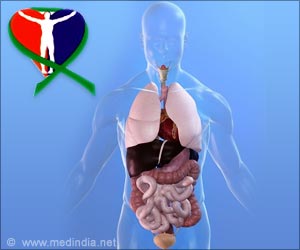Elevated levels of cell-free DNA in prostate cancer patients could predict which patients have a lower chance of survival and need more aggressive treatment.

‘A blood test for genetic mutations in the cell-free DNA of lung cancer patients can be used to inform treatment selection and serve as an alternative to tissue biopsy.’





Episodes of acute rejection-rejection that takes place in the first few months after an organ transplant-are relatively common. In liver transplant patients in particular, acute rejection develops in about 20% of those treated with standard immunosuppressive therapy. Monitoring for the onset of rejection so that healthcare providers can swiftly counteract it is therefore critical for the long-term survival of organ transplant recipients. However, the gold standard for identifying rejection is biopsy, which is expensive and invasive, and at present there are no effective blood tests to take its place. A team of researchers led by Ekkehard Schütz, MD, PhD, from Chronix Biomedical in Göttingen, Germany set out to determine whether a blood test for graft-derived cell-free DNA-which is cell-free DNA from a transplanted organ-could identify liver transplant patients with acute rejection. In a first-of-its-kind prospective multicenter trial, they monitored graft-derived cell-free DNA in the blood of 106 adult liver transplant recipients for at least one year post transplant. They found that in the 87 stable patients with no signs of graft injury and who were negative for hepatitis C virus infection, the median graft-derived cell-free DNA percentage decreased within the first week to a baseline level of <10% of total cell-free DNA concentrations. However, in the 20 patients with samples drawn during biopsy-proven acute rejection periods, graft-derived cell-free DNA levels were about 10-fold higher than those observed in the stable patients.
Overall, Schütz and colleagues determined that by testing for graft-derived cell-free DNA levels >10%, they were able to identify more than 90% of liver transplant patients with acute rejection-which is a substantially higher percentage than what conventional liver function tests can identify. They also believe that this test could detect heart and kidney transplant rejection, and are conducting additional studies to confirm this.
"This is really a universal test-you can use it for all kinds of solid organ transplantation since it's just detecting the graft DNA, and it's independent of what graft you are looking at," said Schütz. "It will allow us to start treating these patients as early as possible, which not only impacts the acute situation that the patient is suffering at the time, but also impacts the long term survival of the graft. If we are able to diagnose rejection quickly enough-within a day or one and a half days-and the treating physician can react, then we can avoid really high-grade rejections further down the line."
In addition to this study, researchers will present the latest in cell-free DNA tests at the AACC Annual Scientific Meeting & Clinical Lab Expo. New findings reveal that elevated levels of cell-free DNA in prostate cancer patients could predict which patients have a lower chance of survival and need more aggressive treatment. All sessions and scientific posters will be presented at the Pennsylvania Convention Center in Philadelphia.
Advertisement













